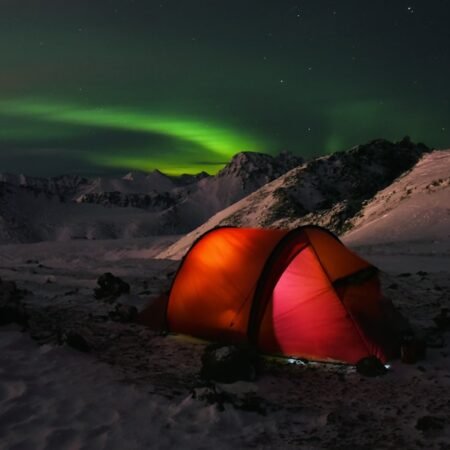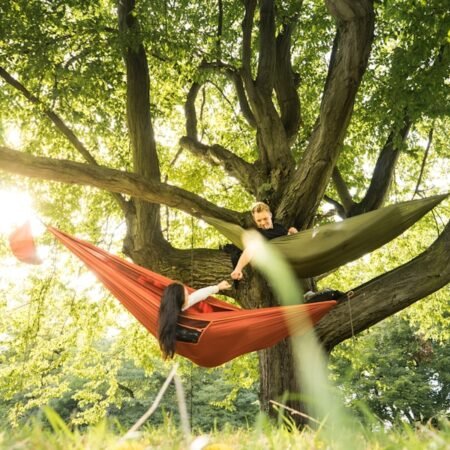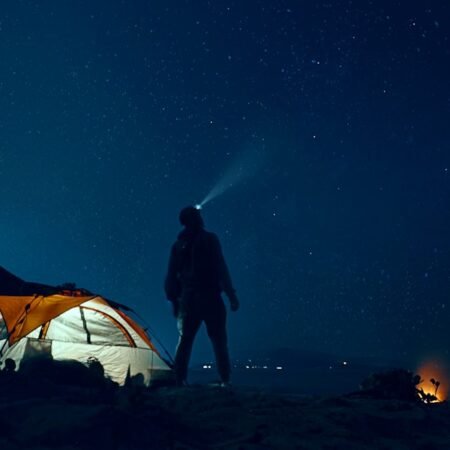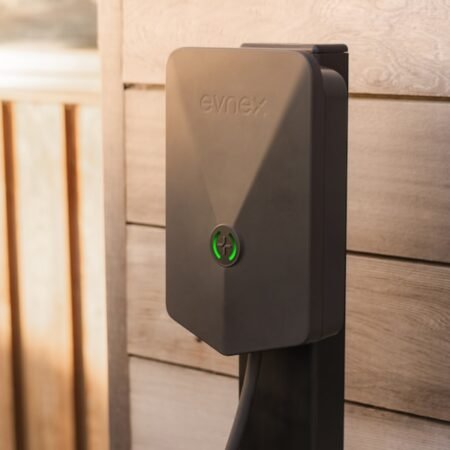When setting up a hammock for camping, the first step is to choose the right location. Look for two sturdy trees that are about 12-15 feet apart and free from any dead branches or other potential hazards. It’s important to consider the surroundings as well, such as the proximity to water sources, wildlife activity, and potential wind exposure.
Additionally, be mindful of any regulations or restrictions in the area regarding hammock camping. Choosing a location with a beautiful view or near a peaceful stream can enhance the overall camping experience. When selecting a location, it’s also important to consider the Leave No Trace principles.
Look for a spot that has already been used for camping to minimize impact on the environment. Avoid setting up your hammock near fragile vegetation or disturbing wildlife habitats. By choosing a location that is already established, you can minimize your impact on the natural surroundings and help preserve the beauty of the area for future campers to enjoy.
Key Takeaways
- Choose a location with sturdy trees or anchor points that are at least 12-15 feet apart and clear of any hazards.
- Select a hammock that is appropriate for your weight and size, and consider a suspension system that suits your needs, such as straps or ropes.
- When setting up the hammock straps, ensure they are wrapped securely around the trees or anchor points and are at the correct angle for a comfortable hang.
- Adjust the hammock for comfort by lying diagonally to create a flatter surface, and consider using a sleeping pad or underquilt for insulation in colder weather.
- Be prepared for different weather conditions by using a rainfly or tarp for rain protection, and a bug net for insect protection.
- Ensure a safe and secure setup by checking the weight capacity of your hammock and suspension system, and always test the setup before fully committing your weight to it.
- When packing up, leave no trace by removing all equipment and disposing of any waste properly, and avoid damaging any natural surroundings.
Selecting the right hammock and suspension system
Once you have chosen the perfect location, it’s time to select the right hammock and suspension system. There are a wide variety of hammocks available on the market, ranging from lightweight and compact options for backpacking to larger and more luxurious models for car camping. Consider factors such as weight capacity, material durability, and ease of setup when choosing a hammock that best suits your needs.
Additionally, think about whether you want a hammock with an integrated bug net or rainfly for added protection in different weather conditions. In addition to selecting the right hammock, it’s important to choose a reliable suspension system. Most hammocks come with straps and carabiners for easy setup, but there are also aftermarket suspension systems available for those looking for added versatility and adjustability.
When selecting a suspension system, consider factors such as weight capacity, tree-friendly materials, and ease of adjustment. It’s important to choose a suspension system that is not only easy to use but also minimizes impact on the trees and surrounding environment. By selecting the right hammock and suspension system, you can ensure a comfortable and secure setup for your camping adventure.
Setting up the hammock straps
Once you have selected the perfect location and the right hammock and suspension system, it’s time to set up the hammock straps. Start by wrapping the straps around each tree at a height that allows the hammock to hang at a comfortable level. Make sure the straps are wrapped securely and evenly around each tree to prevent any slippage or damage to the bark.
Once the straps are in place, attach the carabiners from the hammock to the loops on the straps, making sure they are securely fastened before putting any weight on the hammock. When setting up the hammock straps, it’s important to consider the angle at which the hammock will hang. A 30-degree angle is generally recommended for a comfortable and secure setup.
Adjust the straps as needed to achieve the desired angle, making sure that both sides are even to prevent any tilting or instability. Once the straps are in place and the angle is adjusted, test the hammock by sitting in it to ensure that it is secure and comfortable before fully committing to the setup.
Adjusting the hammock for comfort
| Step | Description |
|---|---|
| 1 | Find two sturdy trees that are about 12-15 feet apart. |
| 2 | Wrap the tree straps around each tree at about eye level. |
| 3 | Attach the hammock carabiners to the tree straps. |
| 4 | Adjust the tension of the hammock to your desired comfort level. |
| 5 | Test the hammock by sitting or laying in it to ensure it’s secure. |
After setting up the hammock straps, it’s important to adjust the hammock for maximum comfort. Start by lying in the hammock and adjusting your body position to find the most comfortable angle and position. You may need to make small adjustments to the straps to achieve the perfect level of tension and support.
Additionally, consider using a small pillow or inflatable sleeping pad for added comfort and support while lounging or sleeping in the hammock. In addition to adjusting the tension of the hammock, consider using additional accessories such as a bug net or rainfly if needed. A bug net can provide protection from pesky insects while a rainfly can offer shelter from unexpected rain showers or harsh sunlight.
By making small adjustments and additions to your hammock setup, you can ensure a comfortable and enjoyable camping experience.
Considerations for different weather conditions
When setting up a hammock for camping, it’s important to consider different weather conditions and how they may impact your setup. In hot and sunny weather, look for a location with ample shade or consider using a rainfly or tarp for added protection from the sun’s rays. In cooler temperatures, be sure to bring along a warm sleeping bag or insulated underquilt to stay comfortable throughout the night.
In rainy conditions, it’s important to set up your hammock with a properly tensioned rainfly to prevent water from pooling on top of your hammock. Additionally, consider using a waterproof stuff sack or dry bag to keep your gear dry and protected from moisture. By being prepared for different weather conditions, you can ensure a comfortable and enjoyable camping experience regardless of what Mother Nature has in store.
Tips for a safe and secure setup
When setting up a hammock for camping, safety should always be a top priority. Before getting into your hammock, double-check that all straps and carabiners are securely fastened and that there are no signs of wear or damage. It’s also important to regularly inspect your suspension system for any signs of wear or weakness that could compromise its integrity.
In addition to ensuring a secure setup, it’s important to follow Leave No Trace principles when camping with a hammock. Avoid damaging trees or vegetation when setting up your hammock and be mindful of any regulations or restrictions in the area regarding hammock camping. By practicing responsible camping habits, you can help preserve the natural beauty of the outdoors for future generations to enjoy.
Packing up and leaving no trace
After enjoying a relaxing night in your hammock, it’s important to pack up responsibly and leave no trace of your presence. Start by removing all straps, carabiners, and other accessories from the trees and packing them away in your backpack. Inspect the area for any trash or debris and be sure to leave it cleaner than you found it.
When packing up your hammock, be sure to shake out any dirt or debris before stowing it away in its stuff sack or carrying case. If you used a rainfly or tarp, be sure to shake off any water or debris before packing it away as well. By leaving no trace of your presence, you can help preserve the natural beauty of the outdoors for others to enjoy.
In conclusion, setting up a hammock for camping requires careful consideration of location, equipment selection, and environmental impact. By choosing the right location, selecting the appropriate hammock and suspension system, adjusting for comfort, considering different weather conditions, prioritizing safety, and leaving no trace, campers can enjoy a comfortable and responsible outdoor experience. With proper preparation and mindfulness, camping with a hammock can provide an enjoyable and sustainable way to connect with nature.
FAQs
What is the best way to set up a hammock for camping?
To set up a hammock for camping, you will need to find two sturdy trees that are about 10-15 feet apart. Wrap the hammock straps around each tree at a height that allows the hammock to hang at a comfortable level. Make sure the straps are secure and the hammock is taut but not too tight.
What equipment do I need to set up a hammock for camping?
To set up a hammock for camping, you will need a hammock, hammock straps, carabiners, and possibly a rainfly or bug net depending on the weather and location of your camping trip.
How do I choose the right hammock for camping?
When choosing a hammock for camping, consider the weight capacity, material, and size of the hammock. Look for a hammock that is durable, lightweight, and easy to set up. Consider whether you will need additional accessories such as a rainfly or bug net.
What are some safety tips for setting up a hammock for camping?
When setting up a hammock for camping, make sure to choose sturdy trees that are at least 6 inches in diameter. Check the straps and carabiners for any signs of wear or damage. Always test the hammock’s stability before getting in, and avoid hanging the hammock too high off the ground.
Can I use a hammock for camping in any type of weather?
Hammocks can be used for camping in various types of weather, but it’s important to consider the conditions and prepare accordingly. In rainy or windy weather, a rainfly can provide protection, and in buggy areas, a bug net can keep insects at bay. Always check the weather forecast before setting up your hammock for camping.













